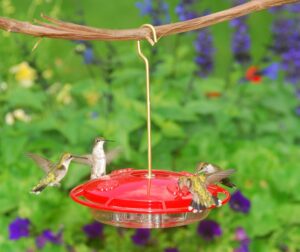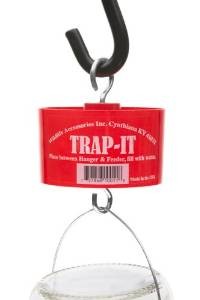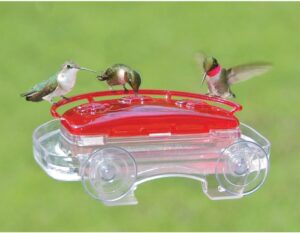The Amethyst-Throated Sunangel Hummingbird: A Jewel of the High Andes
The natural world is home to some truly remarkable creatures, but few can rival the beauty and elegance of hummingbirds. Among these tiny wonders, one species stands out for its breathtaking colors and unique behavior: the Amethyst-throated Sunangel (Heliangelus amethysticollis). Found high in the Andes of South America, this hummingbird is a jewel of the cloud forests, captivating birdwatchers and nature enthusiasts alike with its vibrant plumage and graceful flight.
A Glimpse of Beauty: The Physical Features
The Amethyst-throated Sunangel earns its name from the stunning, iridescent amethyst-colored patch on its throat, which shimmers brilliantly in the sunlight. This striking purple hue contrasts with the bird’s dark green body and metallic blue feathers, making it a true gem of the Andean highlands. The sunangel’s overall appearance is sleek and slender, with a small, sharp bill perfectly suited for feeding on nectar from various flowers.
Adult males are particularly striking with their vivid throat feathers that appear almost like a glowing gemstone when caught in the right light. Females, while still beautiful, sport less intense iridescent colors and lack the bold amethyst throat patch, making them slightly more understated in appearance.
A male Amethyst-throated Sunangel displaying the changing colors of its irridescent gorget. Video taken at Tapichalaca Reserve in southern Ecuador.
Habitat: The Enchanting Cloud Forests
The Amethyst-throated Sunangel is found in the cloud forests and high-altitude regions of the Andes, typically between 2,000 and 3,500 meters (6,500 to 11,500 feet) above sea level. These forests are often shrouded in mist, with the air cool and saturated with moisture, creating an otherworldly environment that seems tailor-made for this hummingbird. The dense vegetation, full of flowers rich in nectar, provides ample food sources for the sunangel, as well as a safe haven for nesting.
The bird’s preference for these high-altitude habitats means it can sometimes be tricky to spot, though birdwatchers who venture into these remote areas are often rewarded with incredible sightings of this beautiful creature. Locations in Colombia, Ecuador, and northern Peru are among the prime spots to observe the Amethyst-throated Sunangel in the wild.
Feeding Behavior: A Delicate Dance with Flowers
As with all hummingbirds, the Amethyst-throated Sunangel is highly specialized in its feeding behavior. It feeds primarily on nectar, using its long, specialized bill to probe deep into tubular flowers. While feeding, it hovers in front of a flower, delicately extending its tongue to draw out the nectar. This hovering behavior, coupled with the bird’s rapid wingbeats, creates a mesmerizing display for anyone fortunate enough to witness it.
In addition to nectar, the Amethyst-throated Sunangel also consumes small insects and spiders, supplementing its diet with protein to support its high metabolism. Like many hummingbirds, the Amethyst-throated Sunangel plays a crucial role in pollination, transferring pollen from flower to flower as it moves from one bloom to the next.
Conservation Status: A Precious Bird to Protect
Although not currently listed as critically endangered, the Amethyst-throated Sunangel faces several threats to its habitat. The deforestation of Andean cloud forests due to agricultural expansion and logging is one of the most pressing issues. As these delicate ecosystems are destroyed, the bird’s already limited range becomes even more restricted, threatening its long-term survival.
Conservation efforts are underway in some regions to preserve the habitats of these stunning creatures. Protected areas, eco-tourism, and sustainable land use practices are key to ensuring that the Amethyst-throated Sunangel and other high-altitude species continue to thrive in the future.
A Bird That Captures the Heart
The Amethyst-throated Sunangel is a true marvel of nature, both in its dazzling appearance and its role in the ecosystem. Its vibrant colors, unique feeding habits, and high-altitude habitat make it a symbol of the beauty and fragility of the world’s ecosystems. For bird enthusiasts, conservationists, and anyone who appreciates the wonders of nature, the Amethyst-throated Sunangel serves as a reminder of the delicate balance we must work to preserve.
If you ever find yourself trekking through the cloud forests of the Andes, keep your eyes peeled — you might just catch a glimpse of this exquisite hummingbird, flitting through the mist like a living gemstone, its amethyst throat gleaming in the sunlight.
Click on the link to view pictures of the Amethyst-throated Sunangel hummingbird
Hummingbird resources
Here’s a complete guide to attracting hummingbirds to your yard. It lists plants, vines and shrubs that are in bloom for spring, summer and fall. Your hummingbirds will always have flowers to feed on.
Here’s a great article that tells everything you need to know about how to choose the best place to hang your hummingbird feeder.
Here’s the best designed hummingbird feeder to use. It’s leak proof, so it won’t attract insects and it’s easy to take apart and clean.
Here’s a comprehensive guide to help you clean your hummingbird feeder for those times when the nectar is not changed soon enough and mold starts to grow.
One of the best Hummingbird feeders that’s easy to take apart and clean is the HummZinger Ultra.

Aspects 12oz HummZinger Ultra With Nectar Guard.
The HummZinger Ultra 12oz Saucer Feeder is one of the best options for a hummingbird feeder that’s both easy to clean and maintain. This top-tier feeder features patented Nectar Guard tips—flexible membranes on the feeding ports that keep flying insects out while still allowing hummingbirds to feed freely. Plus, it comes with an integrated ant moat to prevent crawling insects from reaching the nectar, and the raised flower ports help divert rain, keeping the nectar fresh.
With a 12 oz capacity, this mid-size feeder offers plenty of space and can be hung or mounted on a post using the included hardware. It has four feeding ports and is made from durable, unbreakable polycarbonate. Whether you’re concerned about bees, wasps, or ants, this feeder is built for easy cleaning and insect protection.
If you already have a hummingbird feeder, and you want to protect it from ants and other crawling insects, the ant moat below will do the job.
Trap-It Ant Moat for Hummingbird Feeders
Using an ant moat for your hummingbird feeder is an effective way to keep ants away from the sweet nectar. These tiny creatures are drawn to

the sugar water, and without a barrier, they will quickly infest your feeder, preventing the birds from enjoying the nectar. An ant moat works by creating a barrier of water that ants can’t cross. Positioned above the feeder, it effectively blocks the ants’ path, keeping them from reaching the nectar.
This simple solution also ensures that your hummingbird feeder remains clean and accessible for the birds, rather than becoming a breeding ground for ants or other pests. It’s a small addition that can make a big difference in maintaining a healthy, inviting space for hummingbirds, while also reducing the need for chemical ant deterrents.
The first and still the best to protect your Hummingbird and Oriole feeder from ants and other crawling insects. Insert between hanger and feeder and fill with water, providing a barrier to crawling pests. Red color to attract hummingbirds.
| Small bottle brushes and pipe cleaners are always helpful to dislodge mold inside the feeder and in the feeding ports. It is necessary to have a clean mold free feeder to attract hummingbirds and to keep them healthy. |
Window feeder for a close up viewing area
Experience the thrill of watching hummingbirds up close as they hover right outside your window. With a hummingbird window feeder!

Having a hummingbird window feeder brings the excitement of nature right to your window. Imagine watching these vibrant, tiny birds hover just inches away as they sip nectar. Their iridescent feathers glisten in the light, and their rapid wing beats create a mesmerizing display you can enjoy from the comfort of your home. It’s a truly unique and personal experience, offering a front-row seat to nature’s most agile acrobats.
What makes a hummingbird window feeder even more thrilling is how often these fascinating creatures visit. You’ll get to see them return throughout the day, sometimes making multiple stops at your feeder. Each visit is a new opportunity to observe their graceful movements and learn more about these incredible birds. It’s like having your own live wildlife show right outside your window!
Beyond the joy of bird watching, a hummingbird window feeder adds a burst of color and life to your space. Whether you’re relaxing indoors or enjoying a cup of coffee, the sight of these dazzling creatures brings a touch of serenity and beauty to your day. It’s a simple, yet unforgettable way to connect with nature without leaving home.
If you found this article helpful please share it with your friends using the social bookmarking buttons on the left side of this page. Help everyone to increase their enjoyment of feeding hummingbirds. Do it for the hummingbirds!
Hummingbird Resources
U.S. Fish and Wildlife Service – Hummingbird Conservation
This site offers detailed information about various hummingbird species, their habitats, and conservation efforts. It also provides resources on how to protect these fascinating birds.
National Park Service – Hummingbird Resources
The National Park Service offers insights into hummingbird species found in national parks, their behaviors, and their role in ecosystems, along with tips for observing them.
Smithsonian National Museum of Natural History – Birds: Hummingbirds
This resource provides educational materials on the role of hummingbirds in pollination and biodiversity, backed by scientific research and exhibits from the Smithsonian.
U.S. Geological Survey – Hummingbird Studies
The USGS offers research on hummingbird migration patterns, population dynamics, and environmental threats, including studies on climate change impacts.


